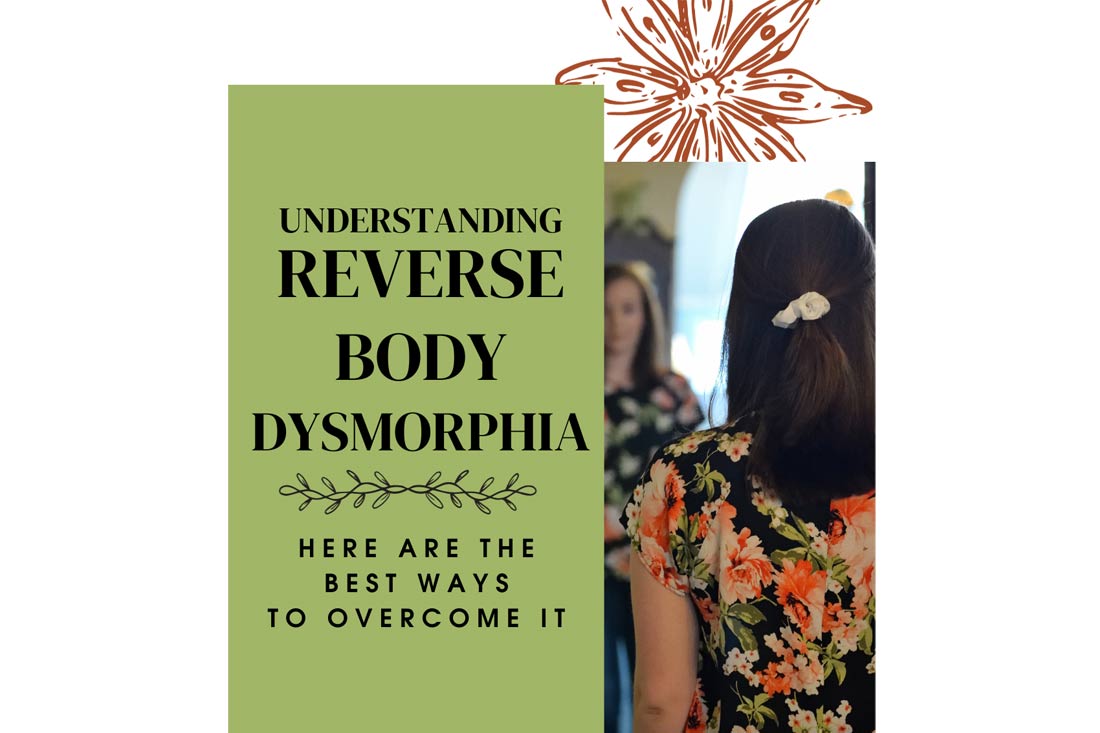
How to Build Body Acceptance with Body Dysmorphic Disorder
Guest Blog Post By Deandra Miller from BioGen Millie.She is a Certified Clinical Weight Loss Coach. With a specialization using the ketogenic way of eating and Intermittent Fasting to help others reach their health and fitness goals. You can read more of her blogs and about her coaching packages here.
Understanding Reverse Body Dysmorphia and How to Overcome It
Reverse body dysmorphia is a complex psychological phenomenon that can leave individuals struggling to perceive their true body size, often only realizing their actual weight when confronted with photographs taken by others. I've been wanting to talk about the distinct aspects of this condition, particularly in comparison to those who've lost weight and cannot recognize their transformation. I want to provide you with expert guidance on overcoming this challenging outlook and managing its emotional impact, with a focus on its effects on women.

Body dysmorphic disorder (BDD), commonly referred to as body dysmorphia, is a mental health condition characterized by an intense and often distressing preoccupation with perceived flaws or defects in one’s physical appearance. After achieving substantial weight loss, it’s common for individuals to have a mental image of themselves that lags behind their actual physical changes. This phenomenon is known as “body dysmorphia.” In simpler terms, it means that even though you’ve lost a significant amount of weight and are healthier than ever, you might still see yourself as overweight or obese in your mind’s eye.
Key points to Understand About Body Dysmorphia After Weight Loss
1. Delayed Self-Perception: Your brain takes time to catch up with your body’s transformation. So, even though you’ve lost weight, your self-image might still reflect your previous, heavier self.
2. Difficulty Acknowledging Success: It can be challenging to acknowledge and fully embrace your weight loss achievements. You may find it hard to believe that you’ve made such progress.
3. Emotional Impact: This condition can be emotionally taxing. It may lead to feelings of frustration, self-doubt, and even a fear of regaining the weight you’ve lost.
4. Handling Compliments: When others compliment your weight loss, you might feel uncomfortable or dismissive, not fully accepting the positive feedback.
5. Managing the Transition: Adapting to your new body can be a process. You may need time to adjust to your healthier, slimmer self both mentally and emotionally.
To Overcome Body Dysmorphia After Weight Loss

1. Positive Self-Talk: Remind yourself regularly of your achievements and the progress you’ve made. Encourage positive self-talk to counteract negative self-perceptions.
2. Visual Evidence: Continue taking progress photos and comparing them to older pictures. These images can serve as concrete evidence of your success.
3. Professional Support: Consider working with a therapist or counselor who specializes in body image and weight-related issues. They can provide guidance and strategies to help you adjust to your new self-image.
4. Set New Goals: Shift your focus from solely appearance-based goals to health and well-being. Setting new fitness or health-related goals can help you appreciate your body’s capabilities.
5. Support System: Share your feelings with friends and family who can offer encouragement and validation of your accomplishments.
Understanding Reverse Body Dysmorphia
Reverse body dysmorphia, sometimes referred to as "photo dysmorphia," is characterized by a persistent misperception of our body size, where we feel we are at a healthy weight until we see photographic evidence to the contrary. This condition is distinct from traditional body dysmorphia and differs significantly from someone who has lost weight but struggles to recognize it. It's important to differentiate between reverse body dysmorphia and post-weight loss body image struggles.
Reverse Body Dysmorphia: In this condition, individuals believe they are at a healthy weight or even underweight, despite being overweight or obese. They only realize their true weight when they see photos taken by others.
Overcoming Reverse Body Dysmorphia
1. Acknowledge the Condition: The first step is recognizing that you might be experiencing reverse body dysmorphia. Understanding the issue is crucial for seeking help and making positive changes.
2. Photographic Reality Checks: Continue taking photos of yourself regularly. Seeing these images can help bridge the gap between your perceived and actual body size.
3. Seek Professional Guidance: Consult with a therapist or counselor who specializes in body image issues. Cognitive-behavioral therapy (CBT) and exposure therapy can be effective in addressing this condition.
4. Mindful Self-Reflection: Practice mindfulness and self-reflection techniques. This can help you become more aware of your thoughts and feelings about your body.
5. Gradual Exposure: Slowly expose yourself to mirrors and photographs. Gradual desensitization can help your mind adjust to your true appearance.
Managing the Mental Effects on Women:
Women often face unique societal pressures when it comes to body image.
Here Are Some Strategies to Help You Manage The Mental Effects of Reverse Body Dysmorphia
1. Challenge Beauty Standards: Recognize that societal ideals are often unrealistic. Celebrate diversity and promote body positivity. Finding things that fit appropriately rather than too small will begin conditioning your mind that this is the true size.
2. Supportive Environment: Surround yourself with a supportive network of friends and family who encourage self-acceptance and self-love.
3. Limit Social Media Exposure: Be mindful of the impact of social media on body image. Unfollow accounts that make you feel inadequate and follow those that promote healthy self-esteem.
4. Self-Care: Prioritize self-care routines that boost your mental and emotional well-being. This can include exercise, meditation, and engaging in activities you love.
Reverse body dysmorphia can be a challenging journey. By recognizing the condition, seeking professional help, and adopting positive strategies, you can regain a healthier body image and, most importantly, cultivate self-love and acceptance. Remember, your worth extends far beyond your appearance, and you are deserving of happiness and confidence just as you are.
Thank you for reading my blog post! Don't forget you can find more of my articles and join a healthy lifestyle.
0 comments
No comments
Popular Posts
Subscribe Us
Subscribe to our newsletter and receive a selection of cool articles every weeks




0 comments